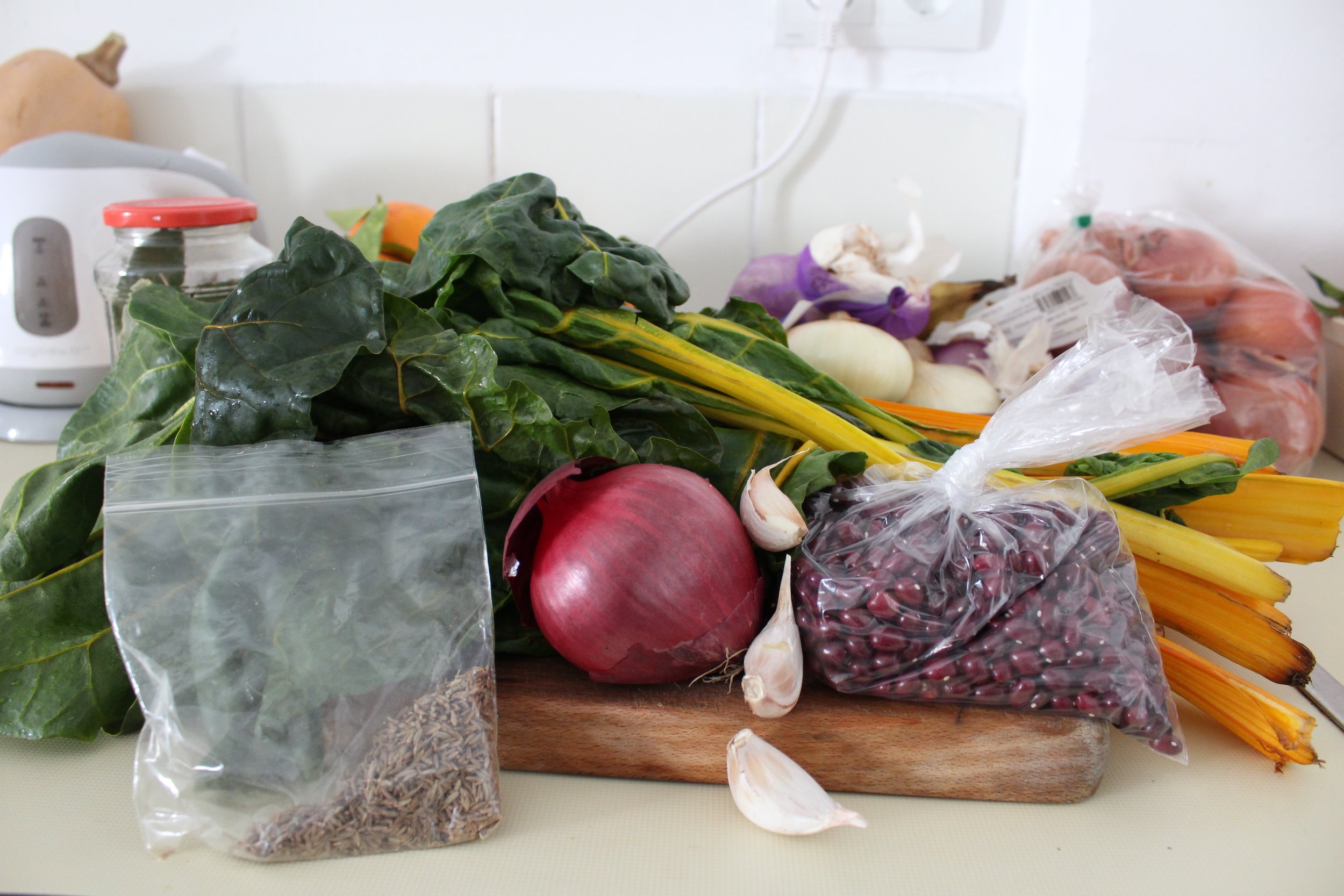Over the past few weeks, I’ve traveled a great deal through towns and cities that are all a part of the Camino de Santiago (reflections on those places coming soon). For those readers that don’t know, the Camino de Santiago de Compostela (literally the “walk of St. James’ of Compostela”) is a pilgrimage route, the most well-known of which runs through the French Pyrenes through the north of Spain to the Cathedral of Santiago de Compostela on the northwestern point of Galicia (see this map for an idea). This pilgrimage is not only famous among the religious, as the ruins of Santiago (aka St. James) were supposedly found in this Galician capital, but also for tons of tourists as well, who to northern Spain to traverse the famous path, hoping on their way to find inner-peace or just enjoy the novelty of the trip. In fact, this pilgrimage has become one of the most well-known of the many fabulous Spanish traditions – up there with the running of the bulls in Pamplona, Buñol’s Tomatina, and Sevilla’s Semana Santa.
Interestingly enough, the city of Santiago de Compostela also boasts a famous, similarly-named dessert called the Tarta de Santiago (“St. James’ cake). Popularized through its omnipresence in the bakeries along the Camino de Santiago, this delectable cake is also found all over Spain as a simple but oh-so-delicious merienda with afternoon coffee or breakfast. Made of a mix of ground almonds, a cloud of meringue, sugar, and citrus zest, this cake has become emblematic of the Camino – and yet it also lays claim to a secret Jewish past that very few who eat it know.
During the 12th and 13th centuries, a wave of Almohads conquered their way from Morocco across the Gibraltar through the caliphate of Al-Andalus. (Al-Andalus, ruled by the caliph Abd al-Rahman III, later became known as Andalusia). The Almohads were very different from their intellectual, liberal Umayyad predecessors: with their more austere interpretation of Islam, they also brought a much less friendly attitude towards Andalusi Jews, who had integrated profoundly in the sociopolitical and cultural milieu of the Umayyad society. Though, technically, the Sephardic Jews of the time were still consider dhimmi, or protected people in Islamic law (mostly they paid a poll tax and couldn’t build their synagogues higher than any mosque), the Almohads bred a much more violent relationship with the Jews, so different than the flourishing convivencia of the Umayyads. This resulted in waves of pogroms and mass conversions of Jews in the south of Spain, from which droves of Jews fled to the northern Christian territories of Spain, at that moment much more tolerant of the Sephardic community. The Sephardic refugees even including such Sephardi notables as Abraham ibn Ezra, an important poet at the time, who wrote the following about his flight from Andalusia:
The Exile dwelt there blamelessly in safety
Without interruption for a thousand seventy years.
But the day came when her people were banished and she became like a widow
Without Torah study or biblical recitation, the Mishnah sealed shut
…That is why I weep and beat my hands, lament forever on my lips.
(trans. Ross Brann, Mark R. Cohen)
Fleeing to the north of Spain, the Sephardim not only brought their intellectual and economic acumen to their new northern Christian courts, but also their recipes and traditional dishes.
And not just any food: according to Claudia Roden, one of my favorite food historians, the Sephardim fleeing Almohad persecution brought their sweets with them. One in particular, a Passover cake made of ground almonds, eggs, sugar, and citrus, made its way all the way to northern Galicia. Sounds familiar right? As Devra Ferst writes: “The widely available tarta de Santiago de Compostela, an almond cake that is made with orange-and-lemon zest and named for a cathedral to which pilgrims travel, was originally a Passover dish from Andalusia in the South” (Ferst, from here).
Even though they were forced to relocate across the country, the cake remained a favorite of Andalusian Sephardim. After waves of forced conversions, it transcended its role as a dessert for Passover – as it has no leavening, it fits the halakhic stipulations for the observance of the holiday – later becoming a staple of judeoconversos. It seems that though they changed religion, these Jewish converts to Christianity didn’t see anything wrong with continuing to make the delicious cake, and evidently their tastes didn’t also change with their religion. Who would have thought that a cake named for a Christian saint and his pilgrimage really was a Passover dessert?
An even more fascinating addendum to this history is that the tarta de Santiago was chosen to represent Spain in the 2006 Café Europa initiative of the European Union. Seems like an ironic, though in this historian’s eyes, an oh-so-fitting selection. But whether you’re fleeing Almohad persecution or making a Christian pilgrimage, everyone, regardless of religious affiliation, can agree this cake is definitely delicious.
Tarta de Santiago
This recipe is adapted from Claudia Roden’s brilliant cookbook The Book of Spanish Food. While this cake can come together in moments with the use of an electric mixer, I opted (read: was forced) to go the medieval route and hand-whip the egg whites into meringue. If you’re up for the arm workout, I recommend it. As Roden explains, and in my experience, this cake sometimes comes with a pastry base or served, as in Navarre, with a thin layer of jam on top. Personally, I like to keep it simple with a generous amount of orange zest in the batter and quick final dusting of confectioner’s sugar (without the customary cross of St. James though). However, if you feel like experimenting, the cake takes phenomenally well to other types of citrus (did someone say lime?!) or other flavorings, like cinnamon or vanilla. Let your imagination run free!
½ pound (1 ¾ cups) blanched whole almonds
6 large eggs, separated
1 ¼ cups sugar
Grated zest of 1 orange
Grated zest of 1 lemon
A few drops of almond or vanilla extract
½ teaspoon cinnamon (optional)
Preheat the oven to 350°F/160°C. Finely grind the almonds into a flour-like texture in a food processor.
With an electric mixer (or by hand), beat the egg yolks with the sugar into a smooth pale yellow cream. Beat in the zest and extract and any other flavorings you want to add. Add the ground almonds and mix well. (The batter will be a little stiff but don’t worry).
With clean beaters (or a clean whisk), beat the egg whites in a large bowl until stiff peaks form. Fold the egg whites into the egg and almond mixture – this will take a while because the egg and almond mixture is so thick, but keep at it until the egg whites are thoroughly incorporated.
Grease an 11-inch springform pan with butter and dust it with flour. Pour the batter into the pan and bake for 40 minutes, or until it feels firm to the touch (Note: this depends on your oven – mine took almost an hour to become fully firm and even then it was just on the edge of underdone. If the top starts to brown too much, just slip a piece of aluminum foil on top, without sealing the pan, of it to protect it). Let the cake cool completely before turning out.
Once cool, dust with a cloud of confectioners’ sugar and, if you’d like, for a traditional effect, cut out a cross of St. James before (see here) and then dust with the sugar. Or, for a Navarre-inspired version, forego the sugar and spread a thin layer of apricot jam on top of the cake. Enjoy!
































